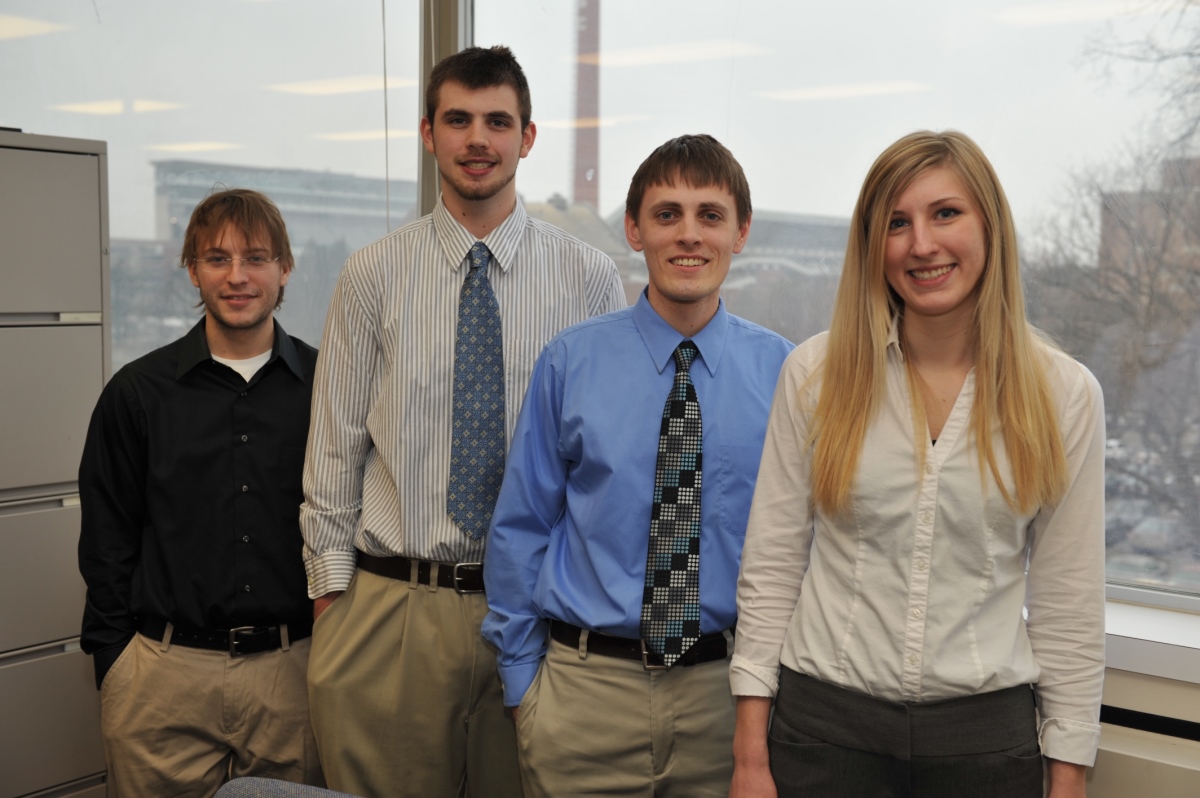 />
/>
St. Louis, Missouri
Team Boeing
XML Texture Decomposition
Winner of the Design Day Chrysler Praxis Award.
The amount of memory and power needed in graphics processing today is continually growing. Applications need a way to get as much power and memory out of as little resources as possible. Utilizing Sparse Virtual Texturing technology, the XML Texture Composition project allows ways to manipulate multiple image textures and draw them on a 3D model. The texture formats used maximize the amount of memory required to draw high-resolution images. The location and priority of how these textures are drawn will be decided through an XML text document loaded into the application.
Previous applications only allow one sparse virtual texture to wrap
around the entire 3D object. This restriction does not allow Sparse
Virtual Textures to be used to their maximum potential. The XML Texture
Composition project extends this technology’s functionality. Currently,
multiple textures can be applied to a model at very precise user
specified locations determined by the text document.
The sub feature of this project includes a menu option that allows the
user to select an image and a location from a dialog box and place it as
top priority on the 3D model at the specified location.
The XML Texture Composition project is implemented as an extension to Open Scene Graph. This project will also be integrated with the Boeing Company’s modeling and simulation software.

Team Boeing
XML Texture Decomposition
MSU Team Members
Jeremiah Cunningham, Livonia, Michigan
Marc Coleman, Lansing, Michigan
Jonathan Harris, East Lansingm, Michigan
Jessica Parks, Ann Arbor, Michigan

